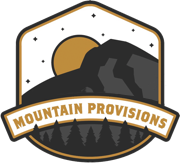Snowshoeing: Don’t overthink it!
Winter is just around the corner and even if you aren’t a skier you should get out and enjoy it. Snowshoeing is a great way to do just that, but don’t over think it like most people do. If you don’t already use trekking poles on hikes in the other seasons, consider a pair of adjustable poles as they will help a ton with balance. Beyond that you don’t really need any specialized gear aside from what you do for a day hike in the other seasons other than a pair of waterproof shoes and snowshoes. I’d recommend renting snowshoes the first couple of times before forking over the money for a pair of your own.
What size should I get?
Check the weight chart. Size depends on how much you weigh with all of the gear you plan on wearing and carrying, as well as the snow conditions. It all comes down to surface area relative to user weight and density of snow. In the Pacific Northwest generally you can get away with a smaller snowshoe than in drier parts of the country because we have wetter snow. Our wetter snow also sets up firmer than drier parts of the country. As such, traction plays a larger role in the Pacific Northwest than other parts of the country. That’s why Mountain Provisions rents MSR snowshoes. MSR is a Seattle based company and understands the unique requirements of the Pacific Northwest. Added bonus… they make their snowshoes in the USA!
New users should know though, snowshoes are not some magical “water wings” that will not sink into the snow. You will still sink in the snow a bit, but nowhere near what you would without them. Going without snowshoes is referred to “postholing” for a reason. I’ve been on a hike in deep snow without snowshoes where I sank up to my hip with each step. I didn’t make that same mistake a second time!
Where should I go?
Where do you normally go hiking that is now covered in snow? Go there.
What about staying on trail?
You can, but you don’t need to. If everything is covered in snow you aren’t impacting the ground. Follow the same Leave No Trace principles you would do during the other seasons. You can ignore “camp and travel on durable surfaces” because you’re on snow and it will melt in the spring. If you are venturing off trail though, make sure that your off-trail navigation skills are up to snuff. If you need to learn wilderness navigation and/or want to brush up on those skills check in with me at Mountain Provisions in the spring because I will be teaching map and compass classes.
What else do I need?
A daypack and poles. You don’t need the poles but they help a ton with balance. There isn’t a whole lot to learn about snowshoeing that you don’t already know from day hiking. Just as in day hiking you should always carry a daypack with water, snacks, extra layers, and a first aid kit.
How is snowshoeing different than day hiking?
The first thing is that you need to walk with your feet slightly wider apart in order to avoid stepping on one snowshoe with the one on your other foot. The other thing you’ll learn is that walking backwards takes some practice and is generally better avoided. This is due to the snowshoes being attached only at the ball of the foot and not the heel. This allows the snowshoe to fall away from your heel when you take a step forward dumping snow off the top of the snowshoe in the process. Otherwise you’d be lifting all that extra snow weight with every step.
Will I be cold?
No. You’ll stay plenty warm while you are moving. If you stop to rest you’re going to want some more layers but while you are hiking you shouldn’t need many. If you aren’t a little chilly for the first few minutes you are overdressed. Being overdressed will make you sweat more, which will then make you colder, leading you to think you weren’t wearing enough. In reality, the exact opposite is true!
